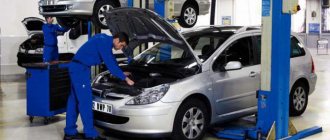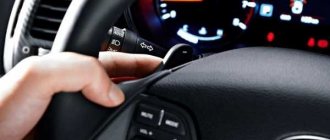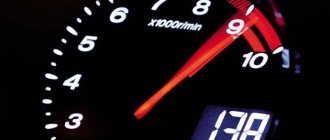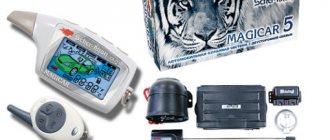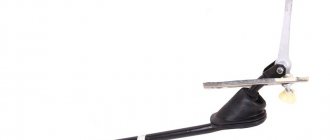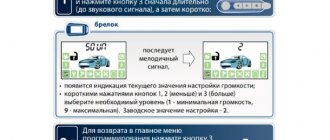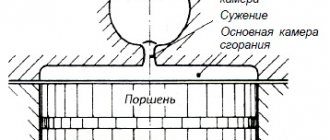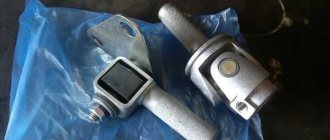The car jerks while driving: we find and eliminate the cause
Almost every driver has encountered such an unpleasant situation when the car began to twitch during acceleration, at low speed, or even at the very beginning of movement. Experienced car enthusiasts say with confidence that such a problem can happen to any car, regardless of age and make. Jerks in motion can be observed both in the Chevrolet Niva and in any other car. If your car begins to jerk while driving, it is recommended to find the cause as quickly as possible and eliminate it in time.
Often, every driver can eliminate such an ailment without the help of specialists at a service station. Ignoring the problem can not only aggravate the situation, which will subsequently require expensive repairs, but also jerking the vehicle often leads to an accident. A faulty car is unable to start a smooth ride and then accelerate. A jerking vehicle not only instills fear and terror on other road users, but also knocks them out of the way. Next, let's try to figure out what can cause the uneven running of the car.
Why does the car jerk when starting off?
Any car malfunction makes its owner nervous. One of these problems is the car jerking when starting off. This can be caused by both trivial reasons, the elimination of which does not require large expenses, and serious breakdowns. In any case, it is imperative to establish the cause of such jerks and eliminate it.
Why does the car jerk when starting off?
If the car starts to jerk while starting from a stop, the reason is usually due to a malfunction of the clutch or CV joints. In such cases, it is imperative to carry out diagnostics in order to immediately determine the breakdown and begin to eliminate it.
The main thing is not to panic, you need to make sure that before you start driving, the engine is warmed up to operating temperature, there are no problems with the ignition and the fuel supply system. If everything is normal here, then we need to further look for the cause.
Driving style
Inexperienced drivers often abruptly release the clutch pedal, causing the car to start jerking away. There are no malfunctions, you just need to change your driving style, learn to smoothly release the clutch and add gas at the same time.
It is necessary to determine the moment of clutch actuation on the car. To do this, start off without adding gas and smoothly release the clutch. Having determined in what position the clutch begins to engage, you can move away smoothly. On a car with an automatic transmission there is no clutch pedal. In order for such a car to move without jerking, the gas pedal must be pressed smoothly.
Problem with CV joints
In front-wheel drive cars, the force from the gearbox is transmitted to the wheels using internal and external CV joints. If these parts partially fail, the car will jerk when moving away.
Signs of CV joint failure:
- backlash;
- knocking while driving;
- crunching when turning.
Replacing CV joints can be done at a service station or independently. These are relatively inexpensive parts that require little time to replace. Having an inspection hole and a set of keys, you can replace the CV joints with your own hands.
Procedure for replacing the CV joint:
- Removing the wheel from the side where the CV joints will be replaced.
- Loosening the hub nut.
- Unscrewing the bolts that secure the outer CV joint to the main drive shaft.
- Removing the axle shaft. It is removed along with the inner and outer CV joints.
Clutch faults
Very often, problems associated with car jerking at the start occur when the clutch breaks down.
Main clutch malfunctions:
- wear or damage to the driven disk, repair consists of replacing it;
- jamming of the disc hub on the gearbox input shaft. Clean the slots from dirt and remove burrs. If the damage is large, you will have to replace the disk or shaft;
- wear of the linings or loosening of their fixation is eliminated by installing a new driven disk;
- weakening or breakage of springs, window wear is eliminated by replacing the disk;
- Seizure on the flywheel or pressure plate. You will have to change the flywheel or clutch basket;
- loss of elasticity by the spring plates located on the driven disk. Eliminated by replacing the driven disk.
Replacement of the clutch driven disc is carried out in the inspection pit. You can raise the front of the car using jacks or a winch.
Work order:
- Preparatory work. Depending on the design of the car, you will need to remove the starter, driveshaft, resonator, exhaust manifold and other parts.
- Removing the gearbox allows access to the clutch.
- Removing the clutch basket cover. After this, all parts are removed from the flywheel. A new driven disk is installed and the mechanism is assembled.
Video: the car jerks when starting due to clutch problems
Gearbox failure
When the gearbox is faulty, in addition to jerking at the beginning of movement, difficulties may arise with shifting gears, and extraneous noise may appear. It will be possible to diagnose and repair the gearbox only at a service station. It will be easier with a manual transmission, since it has a simpler structure and its repair is usually inexpensive. To restore the automatic transmission you will have to spend more money.
Steering faults
The steering rack is responsible for transmitting force from the steering wheel to the front wheels. If there are certain malfunctions, jerking may occur during start-up; in addition, vibrations can be felt in the steering wheel. If the tips are worn out, they begin to loosen. This leads to vibration of the front wheels, so jerking occurs at the start, as well as when accelerating and braking. Worn steering elements are not restored, but replaced with new ones. It is difficult to do this on your own, so it is better to contact a service station.
Problems with engine operation or mounting
Jerking of the car at the beginning of movement may be associated with irregularities in the operation or mounting of the engine. There are many options here. One of them is floating speed, which can be determined by the tachometer readings; they will either increase or fall. If there is no tachometer, then by the sound of the engine you will hear how the revolutions change. As a result of unstable speed during start-up, the car may jerk. Some injectors may become clogged, causing fuel to flow unevenly into them and the engine to operate incorrectly.
Incorrect mixing of air and fuel leads not only to jerking at the start, but also while driving. Often the reason is associated with damage to the rubber flange of the air duct, which is popularly called the “turtle”. Another reason may be failure of the engine mounting mounts. If this happens, the engine lock is broken. When starting to move, it will vibrate, as a result of which shocks are transmitted to the body and the car twitches.
Video: why the car jerks at the start
If a beginner experiences jerks when starting a car, then it is usually enough to change the driving style and learn to smoothly release the clutch. In other cases, when such a problem occurs, the cause must be immediately determined. This will eliminate the problem and prevent more serious damage. Steering faults can lead to accidents and should only be repaired by a professional.
The car is shaking, what should I do?
At the first stage, the machine is diagnosed. Let's say that you have a VAZ 2106 with a carburetor engine in your garage. Your car already shows signs of “illness” at the first stage of movement. Or the car started moving without any hassle, but when a certain number of revolutions was reached, the engine malfunctioned. All this will not give answers, but only creates questions, because anything can break. In any case, if unstable operation of the car’s power unit is noticed while pressing the accelerator pedal, the first thing you should do is:
- Check air and fuel filters. The supply of air and fuel to form a combustible mixture will be difficult if these elements are heavily contaminated.
- Check the fuel pump. Its incorrect operation leads to unstable fuel supply.
- Check fuel pressure. The supply of the fuel-air mixture under insufficient pressure often leads to jerking of the car. The pressure when the engine is running should not exceed 3 kgf/cm2.
Most of the reasons lie in the car's fuel system. But you shouldn’t write off the ignition system, and sometimes even the transmission can cause discomfort while driving. There can be many reasons. To narrow your suspicions, measure the conditions during which the car begins to act up. To do this, while driving, watch the instrument panel and remember at what moment the uniform movement stopped. Do this several times to confirm that your observation is correct.
VAZ 2106 twitches while driving reasons
VAZ 2106 | The car moves jerkily | Zhiguli
In relation to a car, a jerk is a short-term spontaneous change in the engine crankshaft speed, regardless of the position of the gas pedal.
In everyday use, as a rule, there are a series of jerks. The extreme case of a jerk is a failure, a noticeable delay in the engine's response to pressing the accelerator pedal. Conventionally, three types of jerks can be distinguished:
- at the moment of starting movement;
– with steady motion, i.e. with the accelerator pedal in constant position.
To determine the causes of jerks when driving a car with an injection engine, special diagnostic equipment is required, so in this case we recommend contacting a car service center that specializes in repairing fuel injection systems. However, as practice shows, in most cases jerking is caused by insufficient fuel pressure in the engine fuel line (“rail”) or a malfunction of the throttle position sensor.
If you have some skills, you can identify the cause of jerking yourself.
Jerking when starting to move
At the moment the movement begins, the limiting case of a jerk often occurs - failure. The most unpleasant sensations are associated precisely with the delay in the engine’s response to pressing the gas pedal. Sometimes the engine even stalls. A jerk occurs at the moment the throttle valve begins to open, when, based on a signal from the throttle position sensor, the ECU determines the moment of transition from idle mode to load mode and must increase the amount of fuel supplied through the injectors. If the pressure in the fuel line is insufficient, even with increasing injection duration, there is not enough fuel for a smooth start.
To check the fuel pressure, connect a pressure gauge with a measuring limit of 10 kgf/cm2 to a special fitting on the fuel line using a piece of suitable hose. When the engine is running, the pressure in the fuel line must be at least 3 kgf/cm2.
The pressure test fitting has a design similar to a tire valve, with a spool. Therefore, you can use a foot tire pump hose connector to connect the pressure gauge hose.
The reasons for the decrease in pressure may be:
– faulty fuel pressure regulator. In addition, failure of the regulator may be caused by a loose fitting of the hose on the fitting of the vacuum chamber of the regulator;
– clogged fuel filter;
– faulty fuel pump.
For methods of checking and replacing the pressure regulator, fuel filter and fuel pump, see section. 4 “Engine”, in subsection. "Supply system".
Jerks during acceleration
The cause of jerking during acceleration may be, just as in the previous case (see “Jerking at the moment of starting movement”), insufficient fuel pressure in the fuel line. The ECU, having received a signal from the throttle position sensor about the intensive opening of the throttle at a large angle, strives to maximize the fuel supply, but due to the reduced fuel pressure it is not able to do this. For the reasons for this phenomenon and the method of checking, see “Jerk at the moment of movement starts.”
Jerks during steady motion
Such jerking is most often caused by a malfunction of the ignition system. Diagnostics and repair are necessary (see section 9 “Electrical equipment”). On the way, you can try to do it yourself:
– carefully inspect the engine compartment. Turn off the ignition and check the secure fastening and seating of all wires and connectors at the ignition module and high-voltage wires. Start the engine and listen to its operation - the crackling sound when the high voltage breaks down to ground is weak, but distinct. In complete darkness, the spark during breakdown is clearly visible;
– replace spark plugs regardless of their condition and mileage. Pay attention to the condition of the spark plugs - if they are abnormal, the engine or its systems may need to be repaired.
A specific cause of jerking during steady motion of a car with an injection engine may be damage to the throttle position sensor. Additional symptoms confirming the malfunction of this sensor are:
– uneven operation of the engine at idle;
– reduction in maximum engine power.
The sensor is not dismountable and therefore cannot be repaired. If a sensor malfunction is detected (see section 9 “Electrical equipment”, “Engine control system”), it is replaced as an assembly.
Why does the VAZ 2106 jerk while driving?
Your answer to the question on the topic why the VAZ 2106 car jerks while driving is interesting to us. All about renovation. Here we teach you how to repair a car yourself. How to repair a car yourself at home. We will help you with repairs and repair the car yourself. We know how to restore a car with minimal investment. I have attached video instructions.
Category: Car repairs
Laughter topic: Beautiful sunny morning. An elderly man walks in a city park. A small dog runs after him. A policeman comes up and says sternly: “Put a leash on the dog!” Otherwise I will fine you! The man walks on in silence. The policeman becomes furious: “If you don’t immediately put a leash on the dog, you’ll have to pay a pretty penny!” The man moves on. The policeman takes out a notebook, writes something in it, tears off the piece of paper and hands it over: “Here is the receipt for the fine!” - Why should I pay? This is not my dog! - What? Why is she running after you?! - Well, you are also running after me.
Published by Admin: at the request of Angelyar
Reasoning of the car owner: Appearance, spacious interior, good suspension (I got into good holes a couple of times, apparently without consequences), trunk volume, ground clearance just for the city, quite enough, multimedia system and 4 good speakers
Video: why the VAZ 2106 car jerks while driving
The car jerks when driving
VAZ (Lada) 2101/2103/2106 1970 - 2006
When driving, the VAZ car “jerks.” Idle speed is normal. After warming up and starting to drive, the car jerks in all gears. After adding gasoline, it runs almost normally. Also, if you slowly add gas, you can accelerate it (the car). Help with advice!
On the way to finding the problem is:
check the spark plugs (in good condition, as well as the gap);
check I/O wires;
inspect the distributor (cover and slider), a common problem is either a broken cover or a slider resistor (the resistance of the slider resistor should be from 5 to 6 kOhm).
clean the carburetor, in particular the main jet of the primary chamber;
problem with the fuel pump;
The problem is in the ignition, in particular the KSZ capacitor, if present.
The accelerator may not be working.
If the injectors are clogged, the car also jerks.
for repair of VAZ (Lada) 2101/2103/2106
Subscribe to our channel in Yandex.Zen
Even more useful tips in a convenient format
VAZ 2106 twitches while driving reasons - revs twitch WHILE DRIVING VAZ 2106 - 22 answers
In the Service, Maintenance, Tuning section, to the question the speed of the VAZ 2106 twitches while driving, asked by the author Dmitry Yurievich Kuleshov, the best answer is that you yourself described everything and you know the reason. 98% is ignition. 1% - distributor cover, high-voltage wires. 1% - air leak into the manifold/distributor hose. Viktor AnisimovMaster (1862)
I myself have the same problem at the moment, but on a 2105 and with the same engine.
Reply from Konobeenko Ivan[newbie]throw out your bucket of nuts, loser
stop with this aratuning
Answer from Observer [guru] Replace the spark plugs and check the contacts of the high-voltage wires and low-voltage wires at the distributor and coil. Answer from Vd4735_292 [guru] Set the gaps in the spark plug electrodes according to the standards for your car. If the electronics have a Hall sensor (chopper), then adjust the gaps between the curtain and the sensor to prevent the curtain from touching the Hall sensor. If you are going to work with the breaker anyway, lubricate the bearing of the breaker disk. Answer from Victor Anisimov[guru] Now I have the same problem, I’m also thinking about the ignition. Tomorrow I'll go to the garage to exhibit it.
True, I don’t have gas equipment
see also
“Peter - AT” INN 780703320484 OGRNIP 313784720500453
We eliminate jerks when the car starts moving
According to the number of reviews from owners of VAZ 2106 with a carburetor engine, it is the engine power system that most often poses a problem. Due to the breakdown of absolutely any element of the system, the stable process of fuel combustion in the cylinders can be disrupted. If an insufficient amount of mixture enters the cylinders, then the car in such conditions will not be able to produce the required power. Against the background of this problem, twitching will begin to appear.
Check the pipes, determine if there is any depressurization of the system. Measure the fuel pressure. If the indicator does not correspond to the norm, then further search for the cause should be sought in the pressure regulator, fuel pump. These actions must be performed not only with the carburetor system, but also with the injection system. If an injector is installed on a VAZ 2106, then in this version the ignition system is also connected. The cause of the car jerking can be absolutely any sensor that has failed. Perhaps in this case you will need the help of specialists, because all the work is complicated by the presence of an electronic unit.
If the car won't start
If the VAZ 2106 does not start, you must first identify the true reason. The probable causes of such a problem and possible ways to solve it are as follows.
- The car may not start due to faulty breaker contacts. To confirm or eliminate the risk of such a malfunction, it is necessary to check the condition of the contacts mentioned for the presence of gap violations or oxidation (burning) of the working surfaces. In the first case, you will need to adjust the gap, in the second, you will need to clean or replace the working surfaces. The compression spring will also need to be replaced if necessary.
- The problem may lie in the low voltage wiring of the VAZ 2106 car or in loosening (oxidation) of the wire terminals. You should check the wires going from the ignition coil to the distributor for breakdown and short circuit. There may also be problems with the ignition switch, which needs to be checked, and if it is faulty, it must be replaced or its contact group must be changed.
- There is a possibility of failure of the ignition coil, that is, the spark in the VAZ is lost. Perhaps the problem is a short circuit in the primary winding of this coil, which can be corrected by swapping high-voltage wires. If a spark on a VAZ 2106 appears in a place where it was not there before, but disappears on a new one, this indicates a fault in the spark plug wire.
- Problems with ignition distribution. The distributor capacitor may be broken; therefore, for normal operation of the car, it must be replaced. It also happens that the distributor is installed incorrectly, this leads to the car jerking during acceleration and then stalling.
Eliminate jerking when accelerating a car
If the VAZ 2106 begins to twitch when accelerating, then in this case it is necessary to carefully check the engine power system. The driver presses the speed pedal while driving, but the vehicle does not accelerate. By pressing the accelerator pedal, the driver provokes an increase in the amount of fuel mixture supplied to the cylinders. If this does not happen, breakdowns occur in a uniform manner.
We check all filters: fuel, air. A carburetor engine has 2-3 filters. We will not take into account the mesh in the neck, since it can only prevent the penetration of large particles. You should carefully check the filter that goes to the fuel pump. Often it becomes clogged with impurities, which ultimately prevents the free flow of fuel, causing the engine to starve.
Fuel supply faults
It is quite easy to find out that the car stalls while driving due to the engine being “choked” with the fuel mixture - during a long drive you will find that the signal of the sensor responsible for this function is constantly on.
Here the problem lies in low-quality fuel, which does not quickly “ignite” from the spark of the candles. It can also be caused by gasoline not meeting the requirements for the octane number specified in the vehicle specifications. If there are problems with fuel, the gas pedal will be pressed all the way, and the car will not begin to gain speed. In addition, the car will periodically stall when the clutch is engaged.
Another symptom indicating problems with fuel is the appearance of problems with the car after refueling. The problem is characterized by a rapid drop in engine power at full speed, as well as when constantly changing gears. The way out of the situation is to completely drain the bad fuel mixture, wash the engine and all the fuel system pipes.
Also, the car will constantly stall if there is an interruption in the supply of the fuel mixture. This may be due to contamination in the following system components:
- Dirt in the fuel filter;
- Problems with injector nozzles;
- Dirty throttle valves;
- Fuel pump power failure.
The main symptom of a malfunction of these parts is that there will be a gradual drop in the power of the car’s engine, after which the car will stall even after sharply pressing the gas pedal. If you do not release the clutch carefully when changing gears, this will also cause the engine to stall.
Eliminate jerking when the car is moving steadily
If a Chevrolet VAZ 2106 exhibits twitching during stable movement, this most often happens due to problems with the ignition system. You can often hear car owners complaining that they just installed new spark plugs, but the engine has already failed. Detonation can occur even with new spark plugs due to incompatibility with the engine. If the spark plug fails, then the fuel will not burn completely, and breakdowns will begin in the operation of the power unit.
Checking the spark plugs is quite easy. The first thing you need to do is:
- Check the level of gaps on the unscrewed spark plugs. Check for any irregularities in the sparking process.
- A working spark plug produces a dark blue spark.
- If there is black carbon on the spark plug, then the problem may lie in a faulty ignition or faulty mixture formation.
If checking the spark plugs does not bring any results, you should check all wiring for oxidation and breakdowns. Don't forget about the coil and toggle switch. All elements of the ignition system, as in the case of a problem in the power system, are thoroughly inspected and checked for correct operation.
I washed the engine, the car jerks and troits
The main reasons for unstable engine operation after washing
As a rule, if problems arise with the engine after washing, car owners complain that the power unit is not working. That is, not all cylinders are working. The following signs and symptoms may also be observed: loss of power, increased fuel consumption, problems with starting the internal combustion engine, etc.
Note that there are not so many main reasons why the engine jerks after washing:
- damp candles. Water enters the spark plug well, as a result of which a spark does not occur at the spark plug electrodes.
- It also happens that there is a spark, but it is not powerful enough. If the spark plugs work in this state for a long enough time, they may well completely fail;
- damage to sensors by detergents (if they contain alkali);
- damage to elements in the engine compartment due to excess water pressure during washing;
As you can see, if the car jerks after washing the engine, all problems arise due to errors during the process of removing contaminants, as well as as a result of neglecting basic rules and recommendations.
Most often, drivers strive to wash their car and engine cheaply and with the least amount of effort. To do this, many people prefer to use equipment that creates a high-pressure water jet to wash the engine.
We also recommend reading the article on how to wash a car engine with Karcher. From this article you will learn what you need to consider if you decide to wash your car engine with a high-pressure cleaner.
For example, regular car shampoo and Karcher engine wash. The result is moisture ingress, unstable operation of the internal combustion engine or the inability to start it. In the worst case, a short circuit may occur.
Causes
As mentioned earlier, the cause of the tripping after washing is water, but it is not clear where it could have gotten. So, let’s look at the main points into which cracks H2O got into so that the motor began to work unstably.
The first place to look for trouble is the ignition system. It is worth checking the condition of the high-voltage wires and ignition coil. It is also recommended to pay attention to candles that may have been flooded with water.
The fuel supply system could also be damaged. This is especially true for carburetor cars. Thus, the entry of water into the fuel system causes a shift in the balance of the air-fuel mixture, and, accordingly, tripping and jerking of the power unit.
The third reason may be a malfunction of sensors that have failed due to contact with water. This may also be the cause of a break in the contact wire due to high pressure washing of the motor.
What to do if the car jerks after washing
When the engine stalls after washing, you need to have some kind of action plan (make a checklist) to identify the reasons. But before that, you should once again wipe the motor and wiring dry, blow all areas with air from the compressor, and clean all contacts from plaque. For hard-to-reach places, it is optimal to use compressed air rather than rags.
By the way, in some places the moisture can dry out on its own if you put the car in a dry, ventilated room. Of course, you need to check the spark plugs. This is not difficult to do, but only if you have a spark plug wrench at hand. If the spark plugs are unscrewed, it is better to clean the electrodes from carbon deposits. In addition, it is necessary to wipe the spark plug wells themselves.
If the engine has a distributor, then you not only need to wipe it outside, but also remove the cover to dry the interior. In engines without a distributor, you will have to tinker a little longer, since you will need to dry the ignition coils on each cylinder and then make sure they are working.
If the driver is completely sure that the engine is dried after washing and the contacts are cleaned, and the spark plugs are in perfect order, but the car still jerks while driving and under load, it is better to immediately contact a service center, where they will carry out in-depth diagnostics and determine the faulty one. cylinder and help fix the problem.
Why does my car jerk after washing?
If the car jerks after washing, this indicates that there is a malfunction in the engine and one (or more) cylinders are not working correctly. There may be several reasons for this:
- The water ended up in the candle wells. If a similar situation arises, then the charge supplied to the spark plugs does not form an “even” spark and spreads to the sides. If the spark plugs operate for a long time in this mode, they are likely to fail quickly;
- Problems with sensors. If alkaline products were used when washing the engine, there is a possibility that they got on the sensors. This may lead to their incorrect operation or failure;
- Damage to other engine components. Car manufacturers warn that you need to wash the engine very carefully, without applying high pressure water to the engine. Some drivers neglect this advice, resulting in damage to one or more engine units.
There are many problems that can arise with the engine due to improper washing, and some of them may be “hidden”, that is, they will not manifest themselves in one day, so it is important to wash the engine correctly.
Article on the topic: Tires for winter and summer - the main differences
Main reasons
Jerky engine operation indicates a loss of power or misfire when the load increases rapidly. This can happen for the following reasons:
Ignition system problems.
- When you press the gas pedal, fuel is injected into the cylinders, where detonation should occur from the spark generated. If the ignition is faulty, this process is disrupted and the fuel does not ignite.
Problems in the power and fuel supply system.
- Contaminated elements (nozzles or injectors, air or fuel filter) prevent the supply of the required amount of fuel for acceleration, so the engine fails to operate.
Poor quality fuel.
- If failures are observed immediately after refueling the car, the conclusions suggest themselves.
What to do if the engine misfires after washing
Increasingly, car owners decide to undergo such a procedure as washing the engine of their favorite car. It is certainly necessary to clean the power unit, since its condition and durability depend on it. But sometimes after water procedures the engine gives drivers a surprise - the engine stalls or does not start. In order to respond to such a turn of events in a timely manner, it is necessary to understand what actions to take next.
Various problems may occur after washing your car.
It’s worth understanding what the phrase “motor troubles” means. Troubleshooting is a malfunction of the engine in which one and four cylinders stop working normally. The consequence of such a malfunction may be an increased amplitude of operation of the power unit and constant vibration. At idle speed, an engine with a failed cylinder will operate unevenly, with dips.
Sometimes when driving with an engine in which only part of the cylinders are working, the car jerks noticeably. Fuel consumption also increases sharply, power is lost, and problems arise with starting the engine, especially when washing the unit in winter.
There may be several reasons why the power unit shakes after washing.
- During washing, water got into the spark plug wells. In this case, due to the presence of moisture, the spark plug cannot produce a spark, and the cylinder, as a result, fails.
- Problems with the engine can also occur due to sensors being damaged after contact with alkaline shampoo.
- Sometimes during cleaning they use equipment that delivers a stream of water under high pressure. Such methods of cleaning the motor can lead to damage to those parts that are vulnerable. For this reason, any car manufacturer defines engine washing using high-pressure apparatus as unacceptable.
Video about possible causes of the malfunction:
If we summarize the reasons for the malfunction of a power unit that has undergone cleaning, then they all boil down to the ingress of water into those parts of the engine that can function properly only in a dry state.
Is it necessary to wash the engine?
There are many opinions and rumors regarding this issue. There are always pros and cons, pros and cons. One of the reasons why the engine is washed is heavy leaks of oil, antifreeze, or antifreeze. The biggest cause of this, of course, is the oil sludge on the engine. It interferes with normal cooling in the summer and the engine overheats. To see and then eliminate where the oil is leaking from, it’s a good idea to wash the engine in a car wash with special chemicals and knock it all down under pressure with water. Coolant corrodes contacts, engine harness wires, electronic control unit and other electrical components of the internal combustion engine, which can adversely affect the operation of the engine.
If the car is often driven outside the city, in the forest, or on rough terrain, dirt sticks heavily to the engine, cooling fan, and radiator. If you don’t knock the clay off the fan in time, it will create vibration and simply break the bearing over time, and you’ll have to replace it. And the cost reaches, especially on foreign cars, colossal amounts.
This way, you can be sure that engine washing is necessary in some cases. But doing it just for the sake of prevention, or against dust, makes no sense. After all, the price of such a procedure can result in tens, or even 100 thousand rubles. One of the expensive components in the engine compartment is the electronic engine control unit. Its cost is measured in tens of thousands of rubles, it all depends on the make of the car. The second most expensive part and the most risk of failure is the ignition coil. It's not cheap. Why are these expensive parts listed in the engine compartment? The thing is that when washing the engine, the car starts to misfire, precisely because of them.
It will be useful: Transmission oil Manol 75w85 (reviews): characteristics, pros and cons
Let's take a closer look at the nuances of the car shaking after washing the engine, how to identify the cause of the shaking, eliminate it on site or in a car service center, and how to prevent water from getting on the electrical elements.
Exhaust system and crankcase ventilation
Once upon a time, young people amused themselves by plugging the exhaust pipe of a car whose owner did not please them in some way. Today they don’t do this, but who knows?! Therefore, if the car was parked on the street and worked fine yesterday, but today it won’t start, you should take a look at the exhaust pipe. If the car starts up, but then begins to “choke”, and more and more every day, the problem may be a clogged muffler or (which happens more often) the catalyst, if there is one. In winter, the system can be clogged with frozen water - ice.
As for crankcase ventilation, the “culprit” here is a contaminated oil trap, due to which the engine begins to “suffocate” with crankcase gases and stall. The problem can be solved by washing the ventilation filter.

